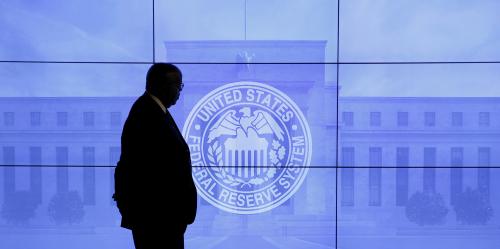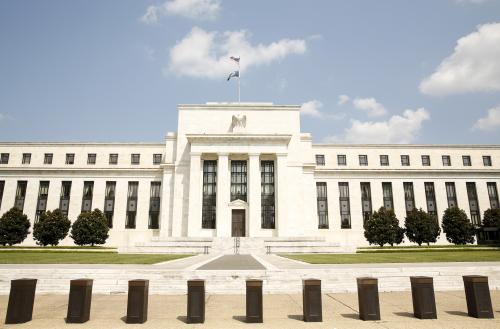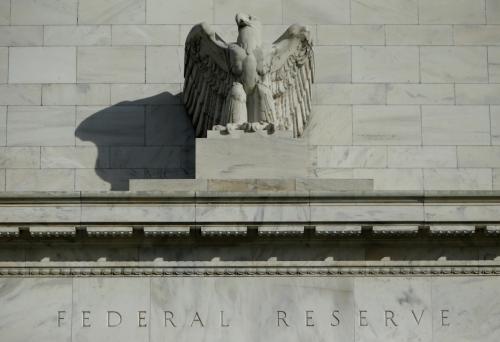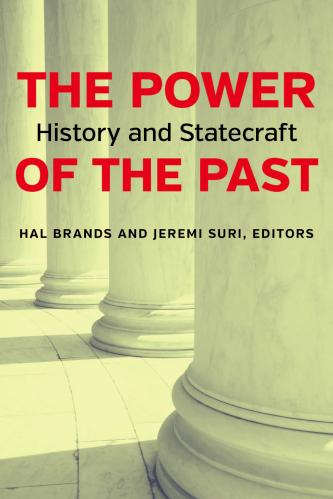Narayana Kocherlakota of the University of Rochester, a former president of the Federal Reserve Bank of Minneapolis, recently challenged what he described as the unhealthy fixation of Fed policymakers—and the economic profession—on relying on rules for setting interest rates, such as the high profile Taylor Rule devised by Stanford economist John Taylor.
At a Brookings Papers on Economic Activity conference, Kocherlakota argued that, in most circumstances, the economy is better off when Fed policymakers have discretion to adopt policies most likely to achieve their inflation and employment goals.
Kocherlakota’s analysis brought a swift and critical response from John Taylor himself, who called it “amazingly contrarian” and “wrong in a number of ways.” (Taylor’s rule, first published in 1993, offers a guide for setting short-term interest rates based on how far the economy is from the Fed’s inflation and unemployment targets and where it sees interest rates when the economy is meeting those goals.) He argues Kocherlakota’s paper fails to address the many positives of such rules, several of which boil down to making the Fed’s actions easier for policymakers and the public to understand. Taylor says, among other things, that Kocherlakota put forth a rigid, strawman interpretation of how a Taylor-rule-constrained Fed would work. In his words, Kocherlakota “mistakenly assumes that rules-based policy must be based on a mathematical formula, and this leads him to advocate pure discretion…” However, he adds, “a monetary policy rule need not be mechanical in practice.”
Kocherlakota, however, found a warmer reception at the BPEA conference from Alan Blinder, who was Fed vice chair from 1994 to 1996 and is now a visiting fellow at Brookings. He said there is a lot of information that can’t be incorporated into a systematic rule, information which “at certain crucial times” is “quantitatively important.”
Kocherlakota also asserts that the Fed was too timid in 2009 and 2010, citing as evidence the Fed’s official forecasts, which anticipated employment and inflation would fall short of their objectives for several years. He says policymakers and their staff were too heavily influenced by the guidance of the Taylor Rule. Taylor replies that, to his dismay, the Fed deviated from Taylor-type prescriptions both before (particularly 2003-2005) and after the crisis, and that when members of the Fed’s interest-rate-setting body, the Federal Open Market Committee (FOMC), were asked in 2009 and 2010 if their interest rate forecasts differed “materially” from the staff’s Taylor-rule-influenced ones, on average over half said they did.
Kocherlakota’s observations about 2009 are particularly interesting because he was a Fed policymaker himself from 2009 to 2015, and went from being a firm opponent of then-Chair Ben Bernanke’s policies in 2009 and 2010 to a firm supporter of those policies. But Kocherlakota says he isn’t guilty of the imprudent fealty to monetary-policy rules that he accuses other Fed officials of. Rather, he says—in a blog posted following the BPEA conference—he was initially worried that inflation would soon exceed the Fed’s 2 percent target and changed his stance when the inflation he anticipated didn’t materialized. “[M]y policy stance was flawed in 2009-10 because I had an incorrect assessment of inflationary pressures. The FOMC’s stance was flawed… because it wasn’t willing to provide sufficient accommodation, given its forecast,” which reveals an expected shortfall on both inflation and employment objectives. “Over the next couple years, lots of data eventually proved me wrong about my inflationary concerns,” he says.











Commentary
On the merits of monetary policy rules: Narayana Kocherlakota vs. John Taylor
September 19, 2016